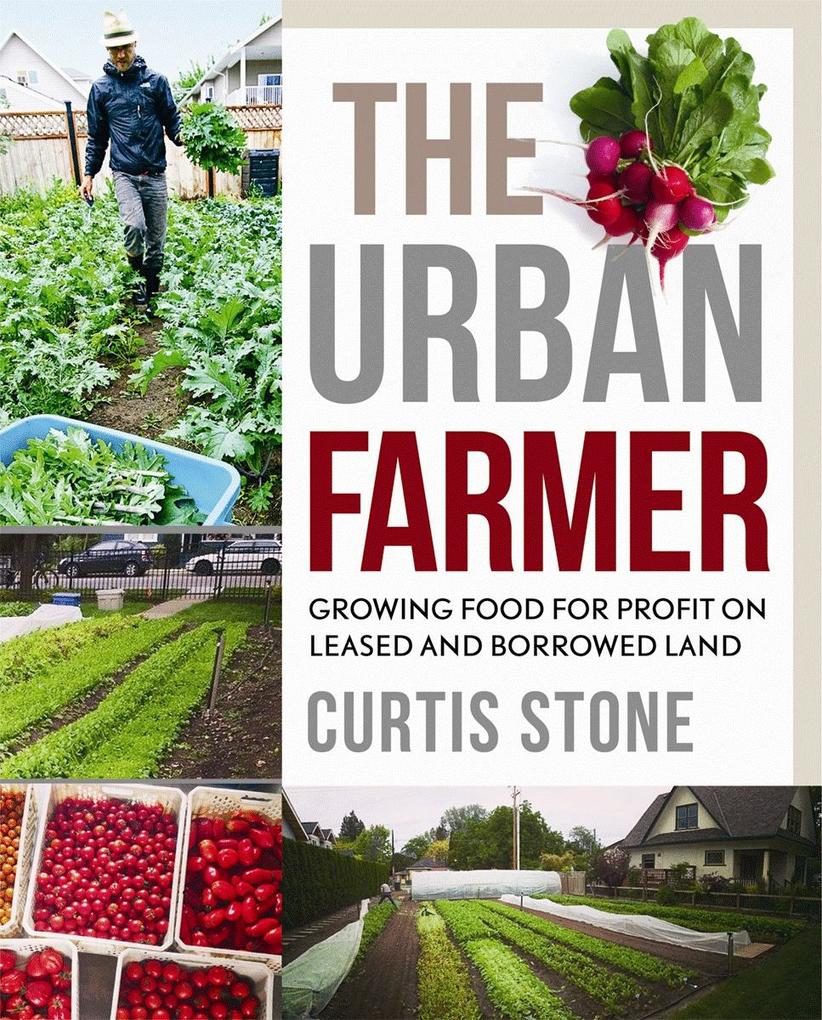
Zustellung: Mi, 11.06. - Fr, 13.06.
Sofort lieferbar
VersandkostenfreiBestellen & in Filiale abholen:
- Features offered to Small Farm Canada, Municipal World, Urban Farm
- Excerpts offered to Mother Earth News, GRIT, The Tyee , Hobby Farm, Permaculture Activist, Countryside, Growing for Market
- Advertising in Mother Earth News, Urban Farm
- Promotion targeting urban agriculture advocacy groups, CSAs, small business enterprise centers and agriculture management and community development organizations.
- Promotion on the author's website www. urban-farmyard. com
- Publicity and promotion in conjunction with the author's speaking engagements
- Galley available on Edelweiss
- Simultaneous ebook release and promotion
- Promotion on New Society Publishers social media platforms including Facebook, Twitter and Pinterest
Farming is taking root in our cities. With only a small capital investment, and without the need to own land, you can become part of this growing movement. The Urban Farmer will help you learn the crops, techniques and business strategies you need to make a good living growing food intensively right in your own backyard.
Strategies and techniques for making a living with intensive food production in small spaces
There are 40 million acres of lawns in North America. In their current form, these unproductive expanses of grass represent a significant financial and environmental cost. However, viewed through a different lens, they can also be seen as a tremendous source of opportunity. Access to land is a major barrier for many people who want to enter the agricultural sector, and urban and suburban yards have huge potential for would-be farmers wanting to become part of this growing movement.
The Urban Farmer is a comprehensive, hands-on, practical manual to help you learn the techniques and business strategies you need to make a good living growing high-yield, high-value crops right in your own backyard (or someone else's). Major benefits include:
- Low capital investment and overhead costs
- Reduced need for expensive infrastructure
- Easy access to markets.
Growing food in the city means that fresh crops may travel only a few blocks from field to table, making this innovative approach the next logical step in the local food movement. Based on a scalable, easily reproduced business model, The Urban Farmer is your complete guide to minimizing risk and maximizing profit by using intensive production in small leased or borrowed spaces.
Inhaltsverzeichnis
Foreword, by Diego Footer
Preface
1: A Farm in the City
Glossary
Endnotes
Index
About the Author
Preface
1: A Farm in the City
- Why Urban Farming?
- Connecting the Dots: An Urban Farmer's Place in the Community
- Quick Breakdown of Economics
- The Zones of Your Farm and Your Life
- Crops Better Suited for the City
- Introdution to Urban Infrastructure
- Start-Up Farm Models
- Starting Small
- Market Streams
- Working with Chefs
- Labor
- Software and Organization
- Self-Promotion
- Finance Options
- Scouting for Land
- Urban, Suburban and Peri-Urban Land
- Multiple or Single-Plot Farming
- Urban Soil
- Land Agreements and Leases
- Urban Pests
- Turning a Lawn Into a Farm Plot
- Choosing A Site
- Garden Layout
- The Perimeter
- Irrigation
- Base of Operations
- Tools
- Special Growing Areas
- Inexpensive Season Extension
- Transportation
- Work Smarter not Harder
- Harvesting
- Post-Harvest Processing
- Portioning and Packing
- Beds for Production
- Planting
- Microgreens
- Extending the Season
- Determine Your Outcome
- The Base Plan
- Parting Words
Glossary
Endnotes
Index
About the Author
Produktdetails
Erscheinungsdatum
01. Dezember 2015
Sprache
englisch
Seitenanzahl
240
Autor/Autorin
Curtis Stone
Verlag/Hersteller
Produktart
kartoniert
Abbildungen
75 color photos, B&W illustrations
Gewicht
538 g
Größe (L/B/H)
284/192/15 mm
ISBN
9780865718012
Entdecken Sie mehr
Bewertungen
0 Bewertungen
Es wurden noch keine Bewertungen abgegeben. Schreiben Sie die erste Bewertung zu "The Urban Farmer" und helfen Sie damit anderen bei der Kaufentscheidung.









